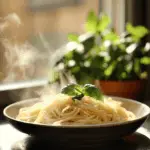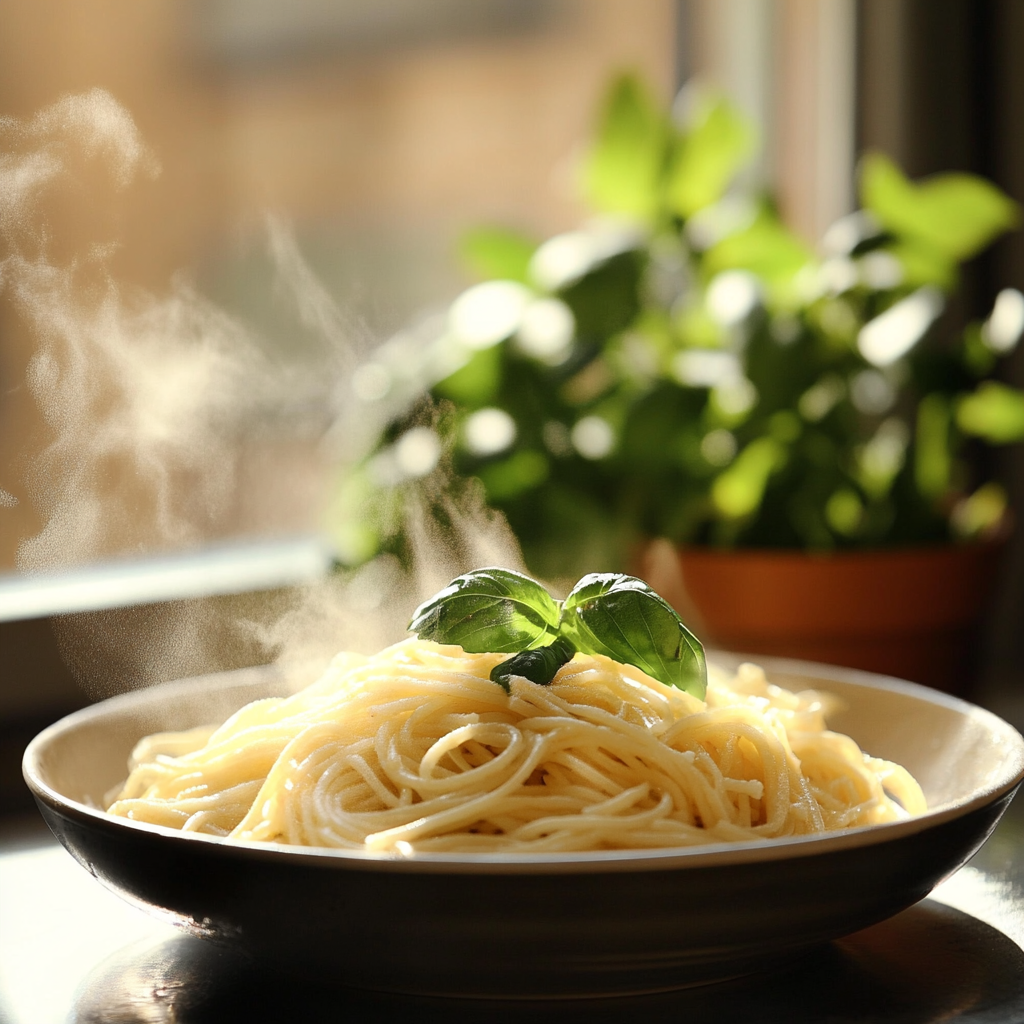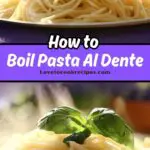Short Description
Mastering the art of cooking pasta al dente ensures a delightful texture that is firm to the bite, enhancing the overall dining experience. This guide provides comprehensive steps to achieve perfectly cooked pasta every time.
Why You’ll Love This Recipe
Cooking pasta al dente not only elevates the taste and texture of your dish but also offers several benefits:
- Enhanced Texture: Al dente pasta provides a satisfying chewiness that complements various sauces.
- Nutritional Advantages: It has a lower glycemic index compared to overcooked pasta, aiding in better blood sugar control.
- Versatility: Suitable for a wide range of pasta dishes, from simple aglio e olio to complex lasagnas.
- Improved Sauce Absorption: The firm texture allows sauces to cling better, enhancing flavor in every bite.
- Prevents Overcooking: Understanding the al dente point helps avoid mushy pasta, preserving the intended dish quality.
Ingredients
(Tip: You can find the complete list of ingredients and their measurements in the recipe card below.)
- 1 pound (450 grams) of dried pasta (e.g., spaghetti, penne, fusilli)
- 4 quarts (approximately 3.8 liters) of water
- 1 tablespoon of salt
Directions
- Boil Water: Fill a large pot with 4 quarts of water and bring it to a rolling boil over high heat.
- Add Salt: Once boiling, add 1 tablespoon of salt to the water. This seasons the pasta and enhances its flavor.
- Add Pasta: Introduce the pasta to the boiling water. Stir immediately to prevent sticking.
- Cook: Refer to the pasta package for cooking time. Begin checking for doneness 2 minutes before the minimum recommended time.
- Test for Al Dente: Remove a piece of pasta and bite into it. It should be tender yet firm to the bite, with a slight resistance at the center.
- Drain: Once al dente, drain the pasta using a colander. Do not rinse, as the residual starch helps sauces adhere better.
- Serve: Combine with your preferred sauce and serve immediately.
Servings and Timing
- Servings: 4 to 6 servings
- Preparation Time: 5 minutes
- Cooking Time: 8 to 12 minutes (depending on pasta type)
- Total Time: Approximately 15 to 20 minutes
Variations
- Whole Wheat Pasta: Requires slightly longer cooking time; check for al dente texture accordingly.
- Gluten-Free Pasta: Tends to cook faster; monitor closely to prevent overcooking.
- Fresh Pasta: Cooks quicker than dried pasta; typically ready in 2 to 4 minutes.
- Stuffed Pasta (e.g., ravioli): Cook until they float to the surface, usually 3 to 5 minutes.
Storage/Reheating
- Storage: Store leftover pasta in an airtight container in the refrigerator for up to 3 days.
- Reheating: Reheat by placing the pasta in boiling water for 30 to 60 seconds or by sautéing in a pan with a bit of sauce or oil until warmed through.
FAQs
What does “al dente” mean?
“Al dente” is an Italian term meaning “to the tooth,” describing pasta that is cooked to be firm when bitten.
Why is al dente pasta preferred?
Al dente pasta offers a better texture, improved flavor absorption, and a lower glycemic index compared to overcooked pasta.
How can I tell if pasta is al dente?
Taste a piece a couple of minutes before the package’s recommended time. It should be tender yet firm to the bite.
Should I add oil to the boiling water?
No, adding oil can prevent sauces from adhering to the pasta. It’s better to stir the pasta to prevent sticking.
Is it necessary to salt the water?
Yes, salting the water enhances the pasta’s flavor. A general guideline is 1 tablespoon of salt per 4 quarts of water.
Can I cook pasta ahead of time?
It’s best to cook pasta just before serving. However, if needed, undercook slightly, cool, and store. Reheat by finishing the cooking process in boiling water or sauce.
Why shouldn’t I rinse pasta after cooking?
Rinsing removes the starch that helps sauces cling to the pasta, diminishing flavor and texture.
How much water should I use to boil pasta?
Use at least 4 quarts of water per pound of pasta to ensure it cooks evenly and doesn’t stick together.
Can I reuse pasta water?
Yes, reserved pasta water contains starch that can help thicken and bind sauces.
Does pasta continue to cook after draining?
Yes, pasta retains heat and can continue cooking. To prevent overcooking, drain promptly and serve or cool immediately.
Conclusion
Achieving perfectly cooked al dente pasta is a fundamental skill that enhances the quality of your dishes. By following these guidelines, you ensure a delightful texture and optimal flavor absorption, elevating your culinary creations.
Print
How to Boil Pasta Al Dente
- Prep Time: 2 minutes
- Cook Time: 8-12 minutes
- Total Time: 10-14 minutes
- Yield: 4 servings 1x
- Category: Main
- Method: Boiling
- Cuisine: Italian
- Diet: Vegetarian
Description
A simple guide to boiling pasta to al dente perfection, ideal for a firm texture that holds sauces well.
Ingredients
- 4 quarts water
- 1 tablespoon salt
- 1 pound pasta (any type)
Instructions
- Fill a large pot with 4 quarts of water and bring it to a rolling boil over high heat.
- Add 1 tablespoon of salt to the boiling water.
- Add the pasta and stir occasionally to prevent sticking.
- Check the package for the recommended cooking time and start testing the pasta 2 minutes before that time.
- Bite into a piece to test for al dente: it should be cooked but still firm to the bite.
- Once al dente, drain the pasta immediately in a colander.
- Do not rinse unless the recipe specifically calls for it.
Notes
- Use plenty of water to allow pasta to move freely.
- Salt enhances flavor and helps prevent pasta from becoming bland.
- Stirring early prevents clumping.
- Timing may vary based on pasta type and altitude.
Nutrition
- Serving Size: 2 oz dry pasta
- Calories: 200
- Sugar: 1g
- Sodium: 0mg
- Fat: 1g
- Saturated Fat: 0g
- Unsaturated Fat: 0.5g
- Trans Fat: 0g
- Carbohydrates: 42g
- Fiber: 2g
- Protein: 7g
- Cholesterol: 0mg



Your email address will not be published. Required fields are marked *